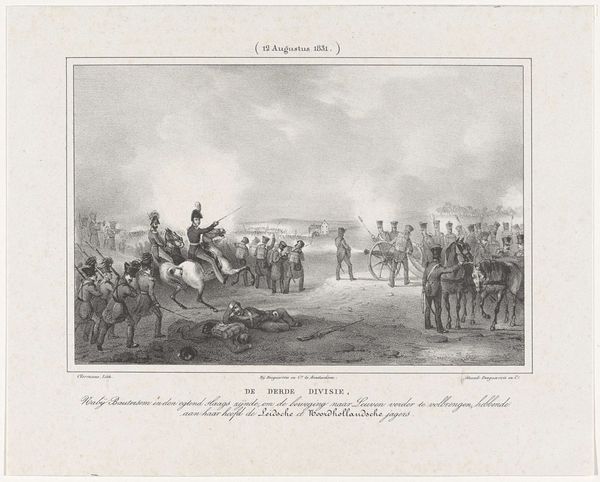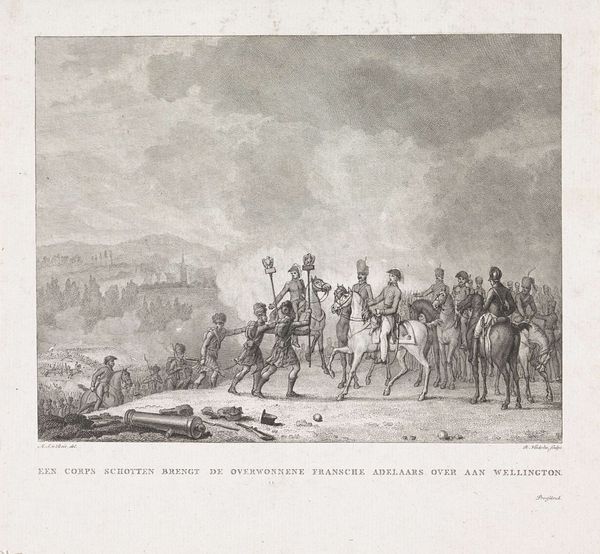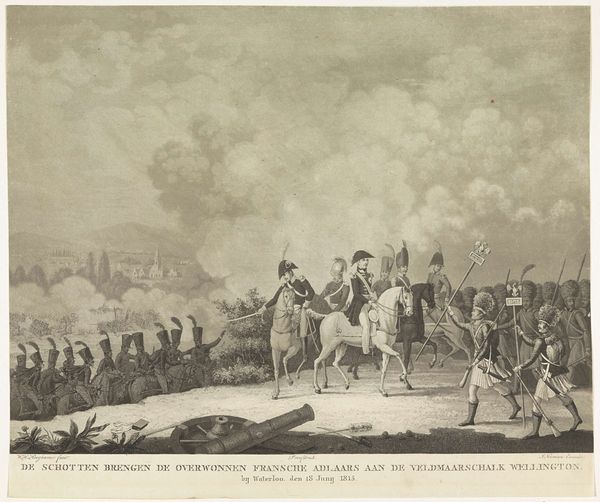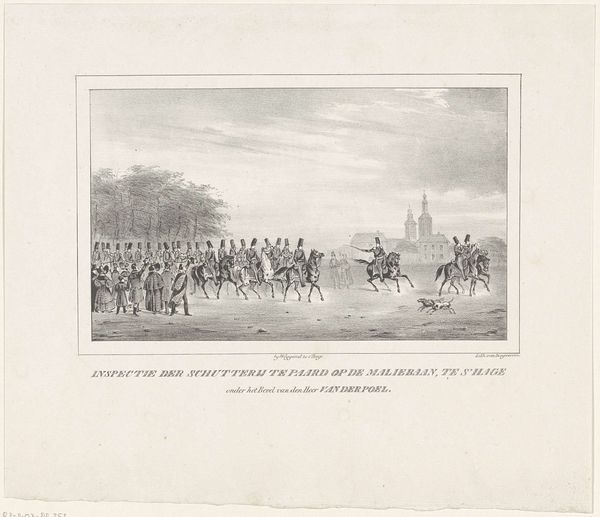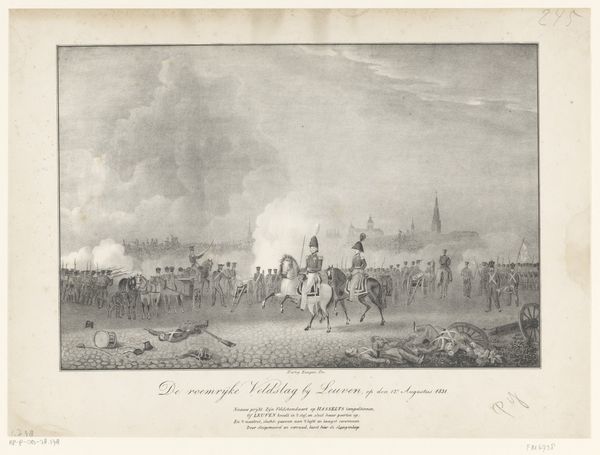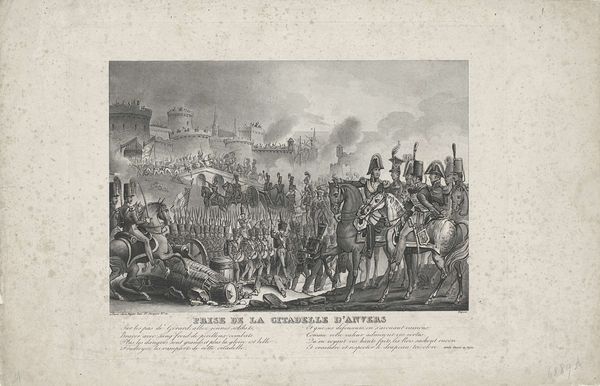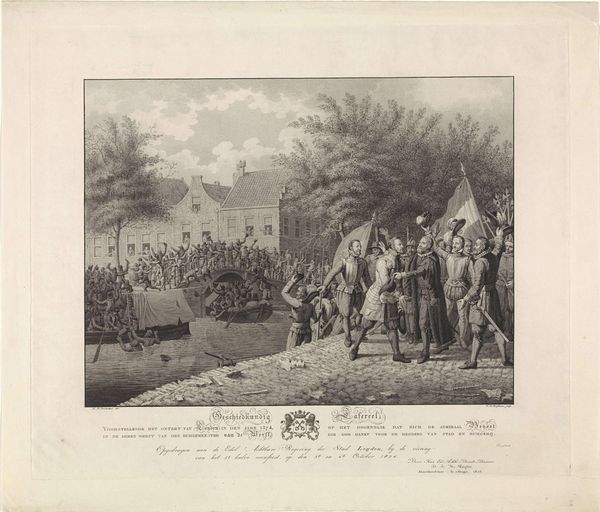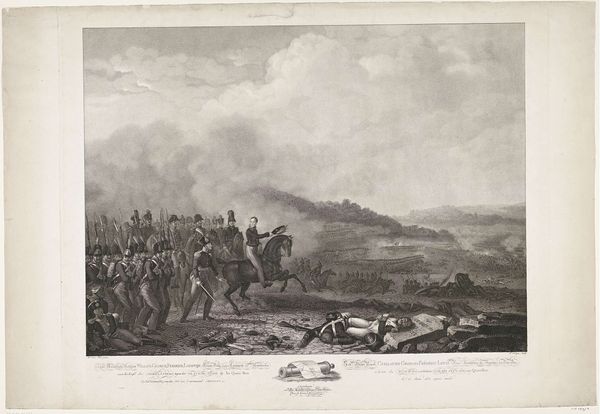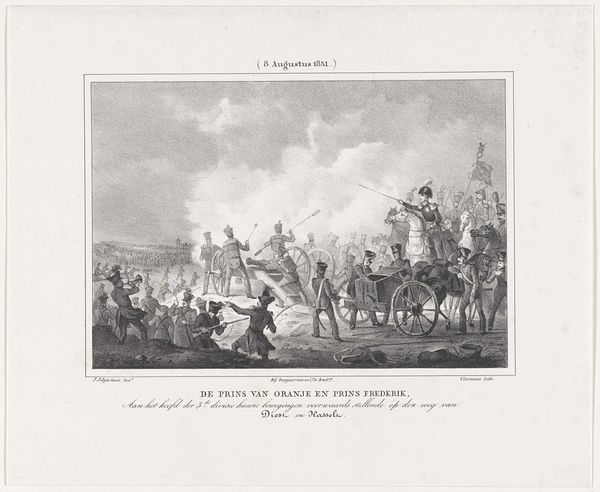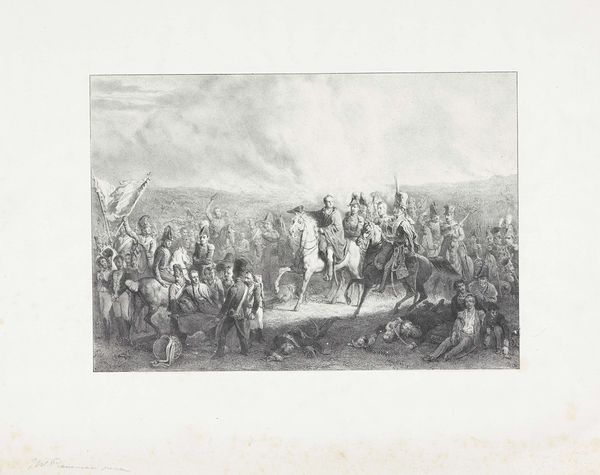
print, engraving
# print
#
landscape
#
romanticism
#
history-painting
#
engraving
Dimensions: height 270 mm, width 360 mm
Copyright: Rijks Museum: Open Domain
Curator: This engraving, held in the Rijksmuseum's collection, depicts the Battle of Leuven, which took place in August of 1831. It was produced sometime between 1831 and 1832. Editor: The atmospheric quality strikes me immediately. All this smokey haziness blanketing the background makes the figures in the foreground seem almost superimposed. Curator: Indeed, the romantic style emphasizes a particular dramatization of history. Battles depicted this way carry weight; they aren’t merely about logistics, but about the heavy symbolic work of nation-building, or in this case perhaps, resistance to it. The plumes and towering sky dwarf the people involved. Editor: I'm interested in how prints like this one were made and consumed. Engravings, like etchings, allowed for mass production. Prints were more affordable and accessible to a wider audience than paintings were. Who were the consumers of such a scene? Did the mode of reproduction affect the reception of the event? Curator: I suspect these would be popular with the burgeoning middle classes interested in ideas of self-determination and also with veterans reflecting upon this turning point in the ten-day campaign, a pivotal point that solidified the secession of Belgium from the Netherlands. Notice the details the artist renders: The central commanders in regal equestrian poses are contrasted against the fallen soldier in the lower left, lending it all an air of classical tragedy. Editor: It's also striking how the material limits the artist here. The tonal variations create an ethereal feel. At the same time, the need to etch fine lines on a plate must impose restrictions in terms of scope, scale, and expression of dynamism. I’m struck by the physical labor of reproduction, translating a monumental event into something reproducible on paper, and the ways in which it could influence popular memory. Curator: It’s compelling to see how visual culture of the era, like this print, informs our understanding of that revolutionary period today. What symbols were made to matter? And to whom? Editor: Thinking about process, medium, audience – helps us move beyond grand narratives, I hope.
Comments
No comments
Be the first to comment and join the conversation on the ultimate creative platform.
